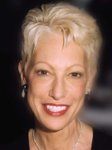- Case-Based Roundtable
- General Dermatology
- Eczema
- Chronic Hand Eczema
- Alopecia
- Aesthetics
- Vitiligo
- COVID-19
- Actinic Keratosis
- Precision Medicine and Biologics
- Rare Disease
- Wound Care
- Rosacea
- Psoriasis
- Psoriatic Arthritis
- Atopic Dermatitis
- Melasma
- NP and PA
- Skin Cancer
- Hidradenitis Suppurativa
- Drug Watch
- Pigmentary Disorders
- Acne
- Pediatric Dermatology
- Practice Management
- Prurigo Nodularis
- Buy-and-Bill
Article
Creative filling techniques rival surgical facelift results
Once used as the go-to tools for filling facial lines and crevasses, fillers are now, for some facelift candidates, replacing the scalpel. Just call it the "nonsurgical facelift," says Deborah S. Sarnoff, M.D., clinical professor of dermatology, New York University Langone Medical Center, New York.

Key Points

Just call it the "nonsurgical facelift," says Deborah S. Sarnoff, M.D., clinical professor of dermatology, New York University Langone Medical Center, New York.
Embracing fillers' versatility requires a change in thinking, according to Dr. Sarnoff. First-generation fillers were for filling lines, but now, especially with the newer fillers, dermatologists can build volume.
Dermatologists can restore lost facial bulk with today's more robust fillers, such as calcium hydroxylapatite, (Radiesse, Merz); hyaluronic acid products, such as Perlane (Medicis); or poly-L-lactic acid, Sculptra Aesthetic (Sanofi-Aventis, off-label).
"Done right, using fillers looks natural. There is not a lot of downtime, and, in many cases, it replaces the need for silicone cheek implants. Often, we can achieve the equivalent of a surgical mid-facelift, by volumizing the mid portion of the face," Dr. Sarnoff says.
Facial trends
The trend during the past couple of years, according to Dr. Sarnoff, has been the heart-shaped, or inverted triangle, face.
"We want broader cheek areas, then, to taper to the chin," she says. "Many of our faces become more square-like as we age. One way to restore that balance is to build up the cheek area."

"You do not just want to volumize indiscriminately," she says.
Dermatologists who attempt facial contouring need an aesthetic eye and proper training on how to augment the bony structures, including the zygoma, malar area and mandible. While male patients, who prefer a sculpted jawline, might require calcium hydroxylapatite filler to build up the posterior mandible, women could achieve a more ideal look with fillers focused in the cheeks, zygoma and preauricular areas, Dr. Sarnoff says.
Dermatologists should skillfully use fillers in thin streams - not clumps - to provide structure and elevate the skin, she says.
Augmenting the browlift
One sign of beauty in a woman is a high brow. Dr. Sarnoff uses Botox (onabotulinumtoxinA, Allergan) to achieve a chemical browlift, along with a small amount of filler underneath the brow (particularly under the lateral brow) to further elevate the brow.
"I would consider using a thinner filler to elevate the brow and a more robust filler right along the maxilla and mandible to augment those areas. That way, we are putting the more robust fillers deep down, on the bone, to augment the bone and using some of the finer fillers higher up in the subcutis and dermis to support and actually lift and elevate," she says.
Dermatologists can also use the thinner fillers to address the dark, sunken areas of the tear trough, Dr. Sarnoff says.





